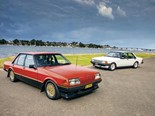1980-1984 Ford Falcon ESP XD-XE - Buyer's Guide



































































|

|

|

|

|

|

|

|

|

|

|

|

|

|

|

|

|

|

|

|

|

|

|

|

|

|

|

|

|

|

|

|

|
Through offering the European Sports Pack (ESP) option, Ford transformed its bread and butter Falcon into a compact limo
Ford Falcon ESP
Ford’s blocky-looking XD-and-on series may have trailed Holden’s then new Commodore into the market by a whole year, but in the end that didn’t matter. Ford in fact ran a slightly panicky ad campaign across the Commodore launch, effectively telling people they should wait until the new-gen Falcon was in market before making any rash decisions.
When it was launched, things got off to a rocky start. Sister magazine Wheels famously withheld its Car of the Year award that year – something of a slap to the industry as a whole, and to Ford in particular, given all the hoopla with its brand new baby.
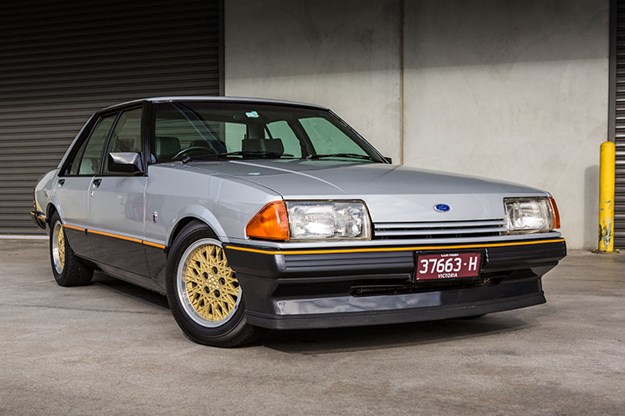 The XE’s basically handsome styling is enhanced in ESP guise
The XE’s basically handsome styling is enhanced in ESP guise
However the series was a sales success and there was little question that it had some practical features that won it friends out there in the market. In practice it turned out to be a strong distance car, with good clearances on rough roads and a particularly capable towing platform – given the right powerplant.
By the time the XE series rolled into view, Ford was dominating the family/fleet car segment and had scored a much-publicised award from the Industrial Design Council of Australia for the entire Falcon, Fairlane and LTD range. Things were definitely looking up.
| 2019 Market Review: Ford Falcon/Fairmont XD-XF
 The two-tone paint was an inspired choice, adding to the car’s visual impact
The two-tone paint was an inspired choice, adding to the car’s visual impact
With Holden’s successful launch of the SL/E Commodore variants, it was also becoming abundantly clear there was a demand for a limousine in sedan clothing – without going to the full extent of a Fairlane or LTD. And that in part was what the Fairmont Ghia ESP (European Sports Pack) was all about. This was pretty much a proverbial ‘one with the lot’.
Given Ghia (aka Carrozzeria Ghia) was a brand that made its name in Europe, you could argue the ESP tagging was a tautology, but then again car companies have often not been rewarded for subtlety in their marketing. In any case Ford was trying to underline a point. With this generation you scored coil rear springs tied to a Watts linkage – on its own a major leap from the traditional cart spring layout. Okay, it wasn’t an independent rear end, but it was a step in the right direction.
| Read next: Ford XD-XE ESP review
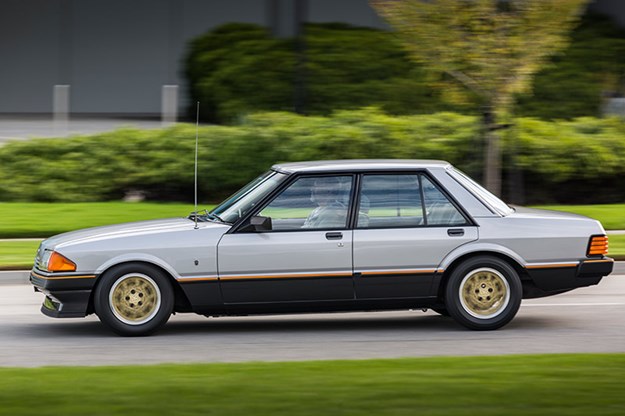
Along with the new rear end, on this model you scored Bilstein dampers – just like some of the fancy Euro makes – plus disc brakes all round. Drum rears were still very much in the market for ‘lesser’ models. The suspension meanwhile was finished off with a slightly lower stance, along with beefed-up coils and anti-roll bars.
When it came to engines, there was news on a couple of fronts. First, Ford was making a fuss of the recently-developed alloy head on the old 4.1lt long six. This remained a torquey plugger rather than a revver, and the ongoing development had refined its manners. A Weber carburettor was the choice for the 1982 Ghia ESPs, though later variants of the powerplant scored injection.
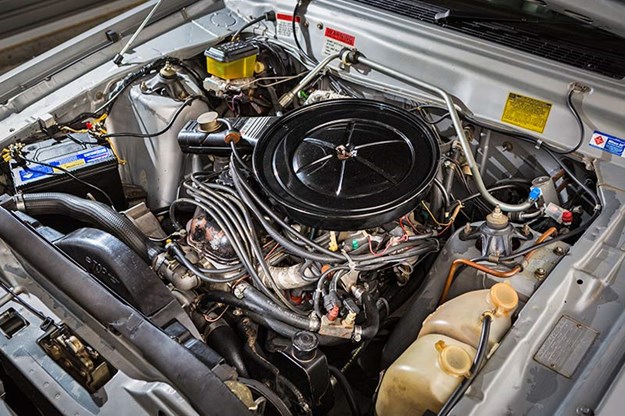 While EFI was coming, the carby-fed Falcon six soldiered on impressively
While EFI was coming, the carby-fed Falcon six soldiered on impressively
The big news however was that Ford in Australia inexplicably was walking away from V8s, so this generation was your last chance to get one in a locally-built car – for a while at least the 302 and 351 remained your choices.
While the six was only offered with a three-speed auto, 302ci ESPs had a choice between autos and a four-speed manual. In theory the 351 was only offered with three pedals, but owner groups swear a couple of special orders made it through with automatics.

Inside, Ford went to town. A full six-pack instrument cluster was on offer, upgraded stereo, unique trim and the big highlight – Scheel front seats. Those pews are now worth thousands on their own and helped to make a real visual break from lesser models.
In addition to the badging, the final visual cue was the gold ‘snowflake’ 15-inch rims. Other Fords were to wear similar items, but Ghia ESP experts say there are some slight differences with the 1982 batches and it pays to get an expert to cast an eye over them if you’re uncertain about getting the real deal. Evidently one of the ‘tells’ is the date stamping.
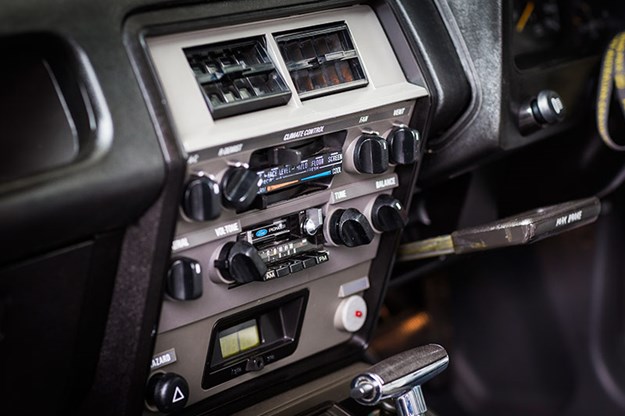 Creature comforts included air conditioning and uprated stereo
Creature comforts included air conditioning and uprated stereo
Production numbers for the XD-XE ESP series as a whole is very low. We’re talking a little over 1000. However when you drill down into these, the Fairmont Ghia ESPs, the figures are tiny and it pays to know what you’re shopping for. Silver or red with the two-tone paint scheme were the most popular colours, while there were a handful of white cars, plus the graphite on graphite scheme.
How they drive will depend very much on what you’re expecting of them. They were never intended to be an all-out performance car, but rather a quick cruiser with (depending on the spec) excellent towing ability.
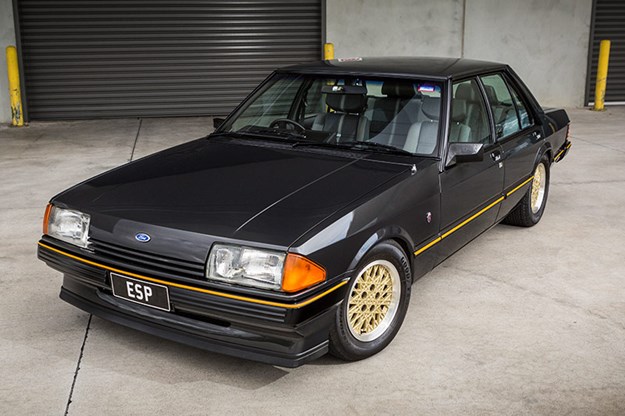 The ESP’s front spoiler lip adds a touch of performance gravitas to the mix
The ESP’s front spoiler lip adds a touch of performance gravitas to the mix
The owners of the two examples you see here are Jason and Simon Vassiliou.
"We just grew up with them I suppose and always wanted one," says Jason, who owns the silver six. When it came to buying his example, he waited till the right car showed up and then pounced. "I jumped on a train to Shepparton and had a look and then drove it home. It was sitting under a tarp in someone’s shed. "Mine had a respray about 15 years ago and I lowered it a little to make it sit a little nicer. That’s about it.
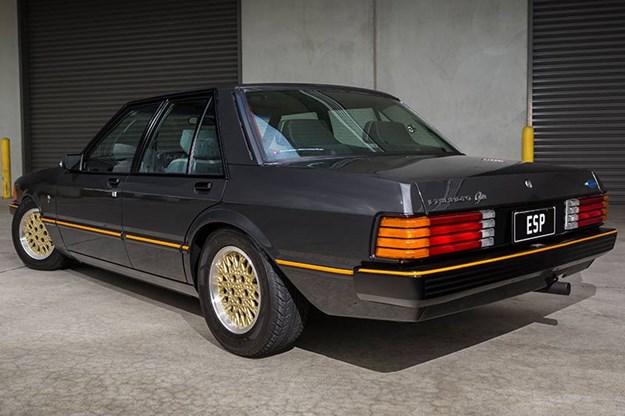 Falcon fans’ eyes are drawn to the gold ‘snowflake’ alloys
Falcon fans’ eyes are drawn to the gold ‘snowflake’ alloys
"It drives well – the dream is always the eight – but these days try to find any ESP in an eight or a six. It’s pretty hard.
"It’s really comfortable, even compared to modern cars. Particularly in the rear. The Scheel seats (up front) are nice and firm and suit big people. It’s the little things that get you on these.
"The body is an XE that was across Falcons to Ghias, so it’s all about the extras."
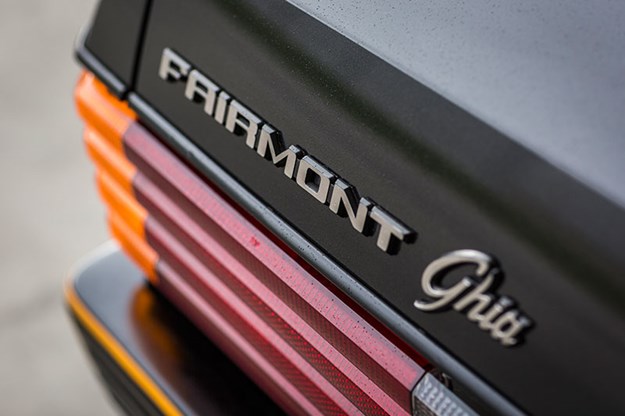
Simon adds, "They’re Ghias, so they came with all the options, it’s an 82 car but it’s got a lot of modern features like power steering and air conditioning. "There was a Falcon ESP but most people went with the Ghia. That meant gold rims, 15-inch snowflakes, trim around the outside, the Scheel front seats. The motors weren’t anything special.
"The two-tone colours were only one year – 1982 – with charcoal lowers. In 1983, when the V8s stopped, they went back to one colour and fuel-injected the six. "We couldn’t afford these cars when they were new."

Jason adds, "Dad always said buying a house comes first, and he was right!" While the house was being paid off, Jason owned numerous XDs and XEs, sometimes painting them in Ghia colours and dressing them up with gold snowflake rims. "People would offer to buy it, so I’d sell it and do the next one. We were always tinkering."
Like his brother, Simon bided his time before jumping at the chance of buying the right car. "The car was in NSW and I did the deal over the phone.
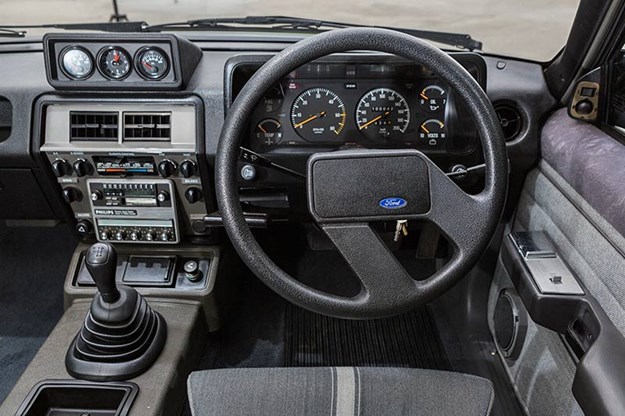
"I mentioned to the wife the night before that I’d bought a car and a one-way ticket to Sydney.
"It only had 97k on the clock. I drove it back down the Hume, it was great."
So what do you look for when you’re in the market for one of these? Research is everything. The brothers warn that you need to check out the detail, including the all-important Option 54 on the build plate. Ford has a good historical service, but it can take time for the info to come through. So if you’re looking at a potential purchase it can be crucial to go in with someone who knows the series – as always, joining a club can be a smart move.
 Unique trim and full instrument pack were value-adding items
Unique trim and full instrument pack were value-adding items
The Fairmont ESPs may not be the quickest car on the planet, but they’re pretty hard to beat as a luxury family cruiser from an era when we were spoiled for choice when it came to locally-made cars.
Value Range Ford Falcon XE ESP (4.9 Auto)
FAIR: $16,000
GOOD: $35,000
EXCELLENT: $50,000
(Note: exceptional cars will demand more)
FORD FALCON XE ESP MARKET
Ford Australia decided in 1982 that the era of the V8 engine was ending. That piece of flawed thinking saw it abandon a significant slice of the private vehicle market, plus police and other fleet users for whom a comfortable car with a big engine was important.
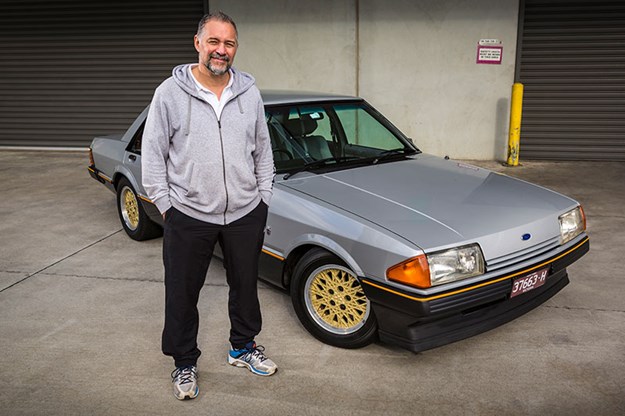
Before handing the V8 market to Holden, Ford did leave for posterity a final version of its European Sports Pack (ESP) Falcon which would grow into a very significant collectible.
The ESP had emerged in 1980, based on the basic Falcon GL and with 4.1 or 5.8-litre engines. XD versions sold in small numbers and didn’t attract much interest until XEs began to soar.
XE versions were available with the basic six-cylinder engine but the majority and the ones that today are worth the most had 4.9 or 5.8-litre V8s. By the time XE versions arrived on showroom floors, supplies of the larger engine were growing thin and only 178 5.8-litre cars were eventually built.
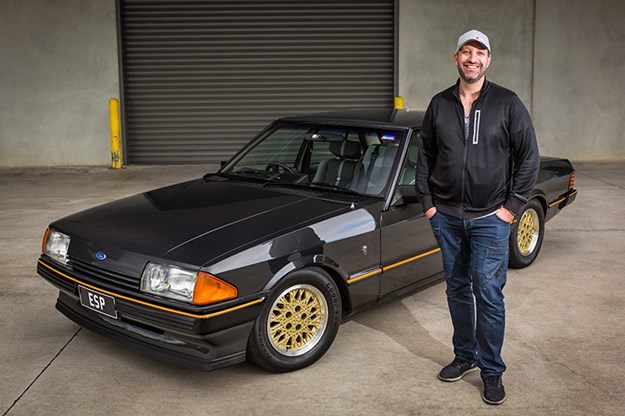
All were supposed to be four-speed manuals but 260 of the 4.9-litre automatic were built and up to 100 more of the 4.9-litre four-speed. These cars can cost 50 per cent more than an automatic in similar condition, while prices for ESP 5.8s threaten to regularly exceed six figures. Six-cylinder cars, although scarce rarely exceed $30,000.
ESPs destined to grow in value must retain their unique equipment and trim. That means colour-keyed Scheel seats and the correct ‘Snowflake’ gold alloy wheels.
BUYER'S CHECKLIST

BODY & CHASSIS
Rust afflicts ESPs as it does any XD/XE Ford. Check the sills, cabin and boot floor, door hinge mounting points and windscreen surround. Rust beneath the windscreen wiper motor can let water leak into the car. Some rust repair panels are available however doors, the bonnet and mudguards will need to be sourced second hand. Cars that have been used for heavy towing suffer kinked rear panels, and front suspension towers can split. Exterior door handles break but can be replaced with repro items for $20-25 each. Bumper mouldings and the essential ESP front spoiler lip are now unavailable.
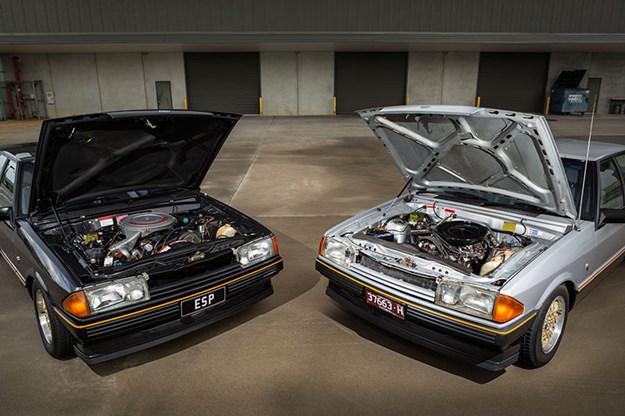
ENGINE & TRANSMISSION
All ESP engines are durable, with oil leaks and overheating the major bugbears. ESPs that travel minimal distances and are regularly serviced can still be suffering from deteriorating hoses and seals. Plan if you buy one to replace some underbonnet rubber and plastic parts. EFI engines suffer injector and Electronic Control Unit (ECU) problems and also need to be checked for welch plug leaks. Vibration from a V8 can be due to aged engine mountings. The Borg-Warner manual and automatic transmissions are similarly durable, although the four-speed’s gearlever has been known to come adrift.
SUSPENSION & BRAKES
Falcon front suspensions are tough and often neglected for that reason. Creaking from worn ball joints and bushes is a common ailment, look for tyres that have worn erratically as an indication of work required. Falcon discs are frequently noisy when cold and can shudder due to being warped. Handbrake failure is frequently due to seized actuators. Wheels need to be checked for damage as replacements for Globe and the gold `snowflake’ rims are difficult to source. A set of centre caps for the 15-inch Globe wheels were advertised at $285 so a complete set of actual wheels would have to realise $1000+

INTERIOR & ELECTRICAL
Much of the ESP’s appeal centres on its unique interior, so don’t pay a premium price unless the seats and door trims are intact and excellent. Authentic replacements are not available, but trim from a Fairmont Ghia may substitute. Cars with the original stereo in working order are rare, while power windows and the electric boot release are prone to failure. Air-conditioners need to have been upgraded to accept compliant refrigerant. Ensure that the fuel gauge sender unit is operating correctly.
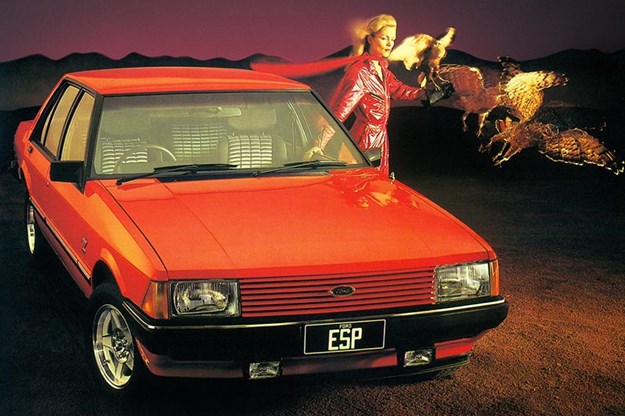
1980-1984 Ford Falcon ESP specs
NUMBER MADE: 1000-plus
BODY: steel, integrated body/chassis four-door sedan
ENGINE: 4089cc in-line six-cylinder, 4942cc or 5766cc V8 with overhead valves and downdraft carburettor (fuel injection on 4.1 from 1983)
POWER & TORQUE: 149kW @ 4800rpm, 415Nm @ 3000rpm (5.8 litre)
PERFORMANCE: 0-100km/h 8.9 seconds, 0-400 metres 16.1 seconds (5.8-litre manual)
TRANSMISSION: four-speed manual or three-speed automatic
SUSPENSION: Independent with struts, coil springs, anti-roll bar (f) Live axle with coil springs, Panhard rod, Watts Link location, anti-roll bar (r)
BRAKES: disc (f) disc (r) power assisted
WHEELS & TYRES: ER60H15 radial
Unique Cars magazine Value Guides
Sell your car for free right here
Get your monthly fix of news, reviews and stories on the greatest cars and minds in the automotive world.
Subscribe

.jpg)













